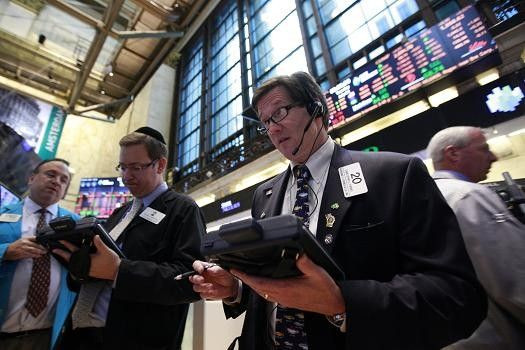The Government-Created Superstorm
Opinion

There's a superstorm raging over our economy that's been seeded and fueled by the federal government over a period of the past several decades. And it's literally costing the country trillions of dollars in GDP per year.
It’s not merely garden-variety government waste that's the problem either. It's monumental stupidity by the government, combined with venial cupidity by voters who think they can get others to pay for their free lunch.
This government-created storm, has, more than any other factor, contributed to the fiscal crisis; a crisis that is creating more expansive government programs, robbing us of more GDP, thus ensuring the political class will take more actions that punishes the most productive and dynamic elements of our society. You know? The people who create economic growth?
In order to understand how this storm is being fed, you need only consult some official government figures.
The labor participation rates released recently by the Bureau of Labor Statistics now stand at 63.6, near Carter-recession levels. According to policy scholar and historian, Professor Richard Vedder of Ohio University, that means as many as 14 million people are officially out of the labor pool. And the professor from Ohio says it's the government's own unemployment program that's helping to reduce the number of bodies willing to work.
“If you give people money to not work,” Vedder said, “some people will say, ‘Gee, that’s a pretty good option.’ There have been a lot of studies over the years going back to the 1970s that show these programs on balance added a bit to the unemployment rate.”
But because unemployment compensation has lasted so long, however, unemployment rates have gone up “a couple of percentage points” from where it would otherwise be.
Vedder's back-of-the-envelope calculations that he shared with me says that those missing workers could be costing the economy as much as $800 billion in GDP per year.
“That’s $2,500 for every person or $10,000 for every family” in GDP, he said.
But that's not all. Multiplied and compounded over 10 years, that's not $8 trillion missing from the economy, but rather $9 trillion. If you want to know why we have an entitlement crisis, why some cities, like Detroit, can't afford to pay for basic services or why teacher pension plans have to cut back benefits, it's not because tax rates are too low, or spending has been cut to the bone. It's because politicians have made off with $9 trillion from our GDP. That' not just missing GDP, you see -- it's missing payroll taxes, income taxes, sales taxes and teacher pension contributions.
While our political and cultural elite like to pretend there is a settled science that supports the notion that government creates "revenue” by acts of Congress and the generosity of the executive office, once again they have it exactly backwards: All public revenues first start out as private money in the economy. When that money is missing from the private sector, it can never afterward make its way to the public sector.
Now here's the bad news: Labor participation rates, and the effect they have on GDP, are just long spring showers that some day will end compared to the storm created by the regulatory burden in the country.
According to a 2011 report by the Heritage Foundation, the government's own Small Business Administration estimated that compliance with various federal regulatory strictures costs the economy another $1.75 trillion every year. And that's before even accounting for the costs of Obamacare and Dodd-Frank financial "reform" -- both of which appear to have higher price tags than originally touted.
While we will never have a regulation-free government -- nor should we -- it bears asking how long we can afford to pay 13 percent of our GDP to comply with federal mandates, over and above taxes that we pay to support basic services like the common defense.
Because doing my own back of the envelope calculation says that by cutting regulatory costs to half of what they are currently means we can add, but another $9.8 trillion in GDP as well. If we combine that growth with policies that encourage employment, we can add $19 trillion to GDP over 10 years. $19 trillion could go very far toward righting our fiscal ship even as the fiscal storm continues.
Because the fiscal storm we see happening in western, industrialized counties isn't just fiscal, it's also demographic. With aging populations and near zero internal birth rates, we can no longer rely, as we once did, on a riding tide of population to lift all boats in our economy.
We need to get back the private GDP that politicians today are so happily squandering through myriad government schemes like Sarbanes-Oxley or emergency unemployment benefits. Since it’s unrealistic to expect politicians to make meaningful cuts in government spending, we have to reduce the burden of government -- over 40 percent of our GDP in 2013 -- by growing the private sector more rapidly.
Or we risk being swamped in the face of this man-caused, government-sponsored superstorm.
John Ransom is finance editor at Townhall.com and the host of Ransom Notes, a nationally syndicated radio show covering the connection between politics and finance.
© Copyright IBTimes 2025. All rights reserved.





















